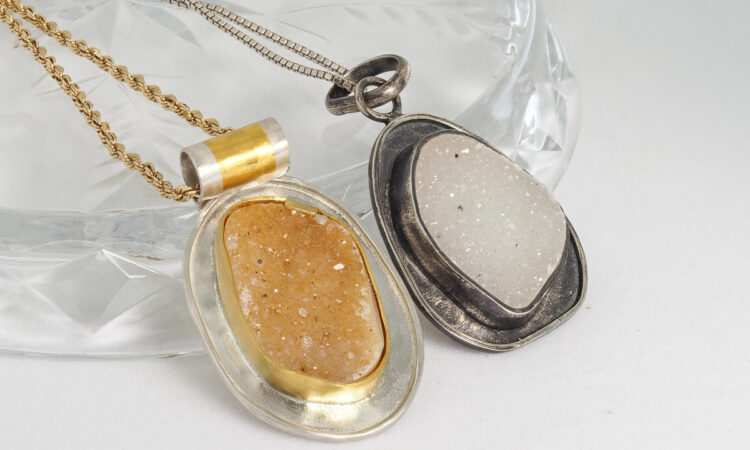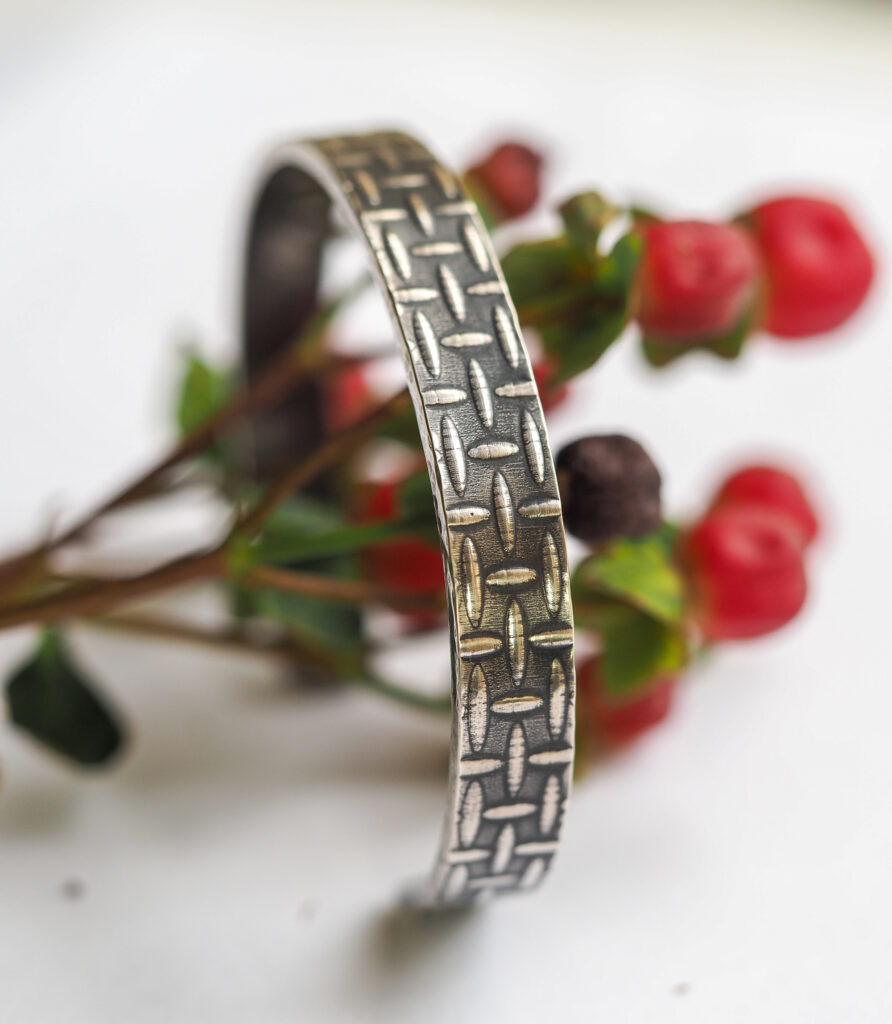IS JEWELRY A “BAD” CHRISTMAS GIFT?
BIRTHDAY AND ANNIVERSARY GIFTS: HOW CAN I GIVE A THOUGHTFUL JEWELRY GIFT THAT DOESN’T HARM THE ENVIRONMENT?
Few gestures can compare with a gift of jewelry for meaningfulness and impact. Jewelry speaks the sincere language of emotion: ‘I give you this precious offering to show how much you mean to me.’ The giver’s generosity and willingness to invest in the relationship become clear in a tender way.
So then why did USA Today label Jewelry as one of the “10 Worst Christmas Gifts?” Yes, that was in 2018, but they haven’t taken it back! This was like dismissing the whole promising category of jewelry for potential gifts, blocking it off with crime tape and warning signs.
I am a retired attorney and mediator turned artisan metalsmith and maker of handcrafted jewelry which I sell on my website donnaweaverdesign.com. I have decades of experience of interacting with jewelry as a purchaser, recipient, wearer, maker and seller. I also have decades of experience advising and guiding clients through complex situations and interactions so they can achieve their intended outcomes.
I’d like to put that experience to work on this “10 Worst” situation. What is the problem here and how can it be fixed?
Buying Jewelry for Your Girlfriend? What Could Possibly Go Wrong?
The USA Today article tells the story of the author receiving from her boyfriend the gift of a silver watch for Christmas. But she wears only gold. He hadn’t noticed that she only wears gold or he didn’t fully appreciate the significance of that fact. He gave her a gift in the wrong metal. She concluded that he wasn’t paying very close attention to her personal style…or to her. The watch remains in a drawer unused. Her boyfriend attempted to surprise and delight her but unfortunately made a common mistake….the clueless style misfire. The gift failed.
The author now does her own gift shopping and provides her partner with links. That gets the job done but, in my view, leaves a lot of potential relationship goodwill value on the table, which makes me sad. If her boyfriend instead had used the system I am going to share with you, I think she would have been truly moved and impressed by the thoughtfulness of the gift…and her boyfriend. I think it could have enhanced their relationship and started a tradition that they could enjoy together again and again during a long and happy life together.
Jewelry As “Wearable Art”
So let’s begin with the concept of jewelry as “Wearable Art.” Two words, selected so we can separate the two distinct areas of purview or domain that go into the gift.
The “Wearable” domain looks to the ultimate enjoyment of the gift and so will be the domain of your partner, the recipient, the one who will wear it.
The “Art” domain refers to the process of knowledgeable and discerning selection of an object of beauty for your partner. This will be your domain.
In other words, you will be letting your partner shape the style while you focus on quality and sustainability.
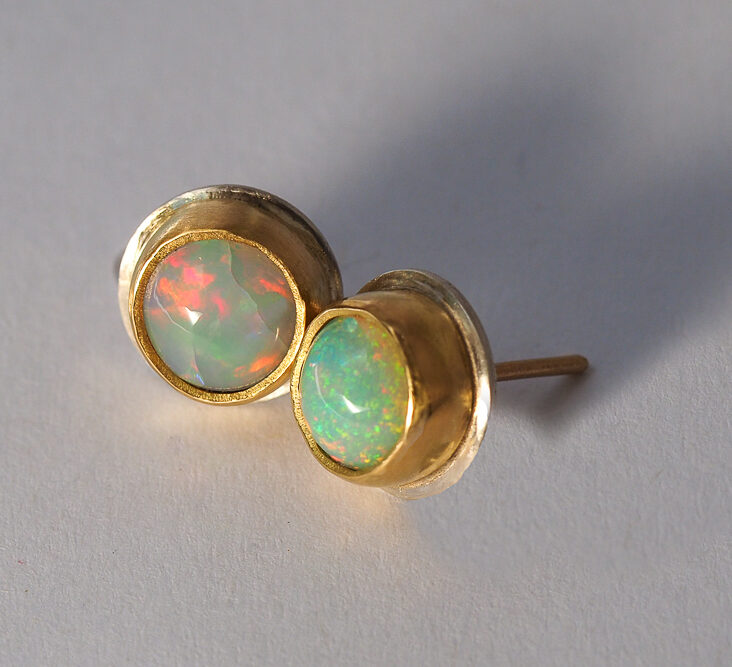
The “Wearable” Part
Why should my partner be the decision maker in the Wearable domain? Your partner is already expert in their own wardrobe and style preferences and aspirations. These are very personal elements of their self-expression that are intrinsic to what we love about them. With your gift, you intend to support and celebrate your partner’s sense of style. You want to avoid unintentionally appearing to guess at it or, even worse, override (criticize) their sense of style. This means you will not be attempting to surprise your partner with this gift.
What might this “Wearable” discussion scenario look like? Your recipient will decide their preferences and priorities about what they would like to receive and wear. They might think earrings or necklace. Their style might be classic, boho, modern. They might prefer silver or gold (remember how important this distinction is?).
They will go with you to look at possibilities. They may collect ideas for you to look at together. It is in this process that the boyfriend will learn she wears only gold. He bought her a watch in silver. But the watch was his idea, not hers. Certainly a gold watch would be much more expensive and let’s assume it is beyond his budget at this time. Gold earrings or a gold bangle, for example, could be found in a similar price range to a silver watch.
See the potential rewards here? With our “Wearable Art” approach of giving decisions in the “Wearable” area to your partner, you will not only be solving the “silver watch” type of “unforced errors” that are all too common. You will also be creating a thoughtful, meaningful and relationship-reinforcing experience. You will be learning more about your partner’s sensibilities and that will help you better appreciate them (not so that you can guess at them in the future).
The ART Part of “Wearable Art”
Now let’s turn to the “Art” in “Wearable Art.” What does this involve?
In my system I ask that jewelry buyers like you think of yourself as an art buyer. Not the Mona Lisa, but art nonetheless. This is not only about your potential investment in the piece, but also about its embedded impacts, environmental and humanitarian. Just like art buyers, jewelry buyers should inform themselves about the issues around origin or provenance, so that they can buy responsibly.
Responsible purchasing. Art and jewelry are both valuable commodities that have a history of being traded outside of regulation systems, leading to a host of problems that are only beginning to be addressed. You don’t want to perpetuate those problems; they would taint your gift. You want to be a force for good with your gift.
Quality. Your domain includes the quality of materials going into the piece, its durability and craftsmanship. This is a vast topic so we are going to break it down. Today we will focus on the metals used to construct the jewelry. The metals must be right or nothing is right. Many jewelry pieces are made only with metals. In a later article, I will go into the vast topic of gemstones.
Sourcing. This subject is within your domain because you are an environmentally conscious human being. You want your gift to align with your values around sustainability and the responsible use of the earth’s natural resources and fair treatment of the workers employed in the process.
Budget. You are also in charge of the budget for the gift. No need to be shy about this; remember the principle that sound financial management is beautiful and reassuring. Develop your budget ahead of time and share that with your partner since it will affect their preliminary “looking stage” shopping too.
Your attention to the aspects set out here in the Art part will gain your partner’s respect for the care and concern that you are bringing to the gift and it will enhance the meaningfulness of the gift.

Choosing Precious Metals for Your Jewelry Gift
Metals are the foundation of most jewelry. It is essential to select metals that will be both beautiful and durable. Here we will focus on precious metals, namely, silver and gold.
Selecting Gold
Select 18k gold at all possible (22k and 24k are softer so used for stone settings and embellishments).
Why choose 18k gold? The reason is gold purity. 18k is 75% gold and 14k is only 58% gold. That amounts to 30% more gold and this extra is evident in the eye appeal of an 18k piece, which will pay dividends every time it is worn. Note: No gold under 14k should be considered for your gift. If at least 14k gold is not in the budget, the piece will be less than 50% gold and mostly alloy. Instead go with silver, which is a precious metal and also makes lovely jewelry.
How can you tell if it is 18k? The piece will generally have a tiny “hallmark stamp” on the back or inside of the piece. Look for “18k.” Feel free to ask the seller for help finding the hallmark.
Selecting Silver
Choose sterling silver or tarnish-resistant silver like Argentium. Sterling silver is susceptible to tarnish and no one likes polishing their silver jewelry. I use Argentium silver exclusively in my work for its tarnish resistance, the only exception being pieces that are intended to have a dark oxidated patina.
Or Choose Mixed Metals–Gold and Silver
A combination of pure metals is fine. Artisan jewelers often do interesting things with mixing gold and silver in the same piece. An example might be a pendant with a silver backplate and a gold stone setting. The piece could have been made with both elements in gold or both in silver. They are used together for artistic effect and it also brings the price down since silver is less expensive.
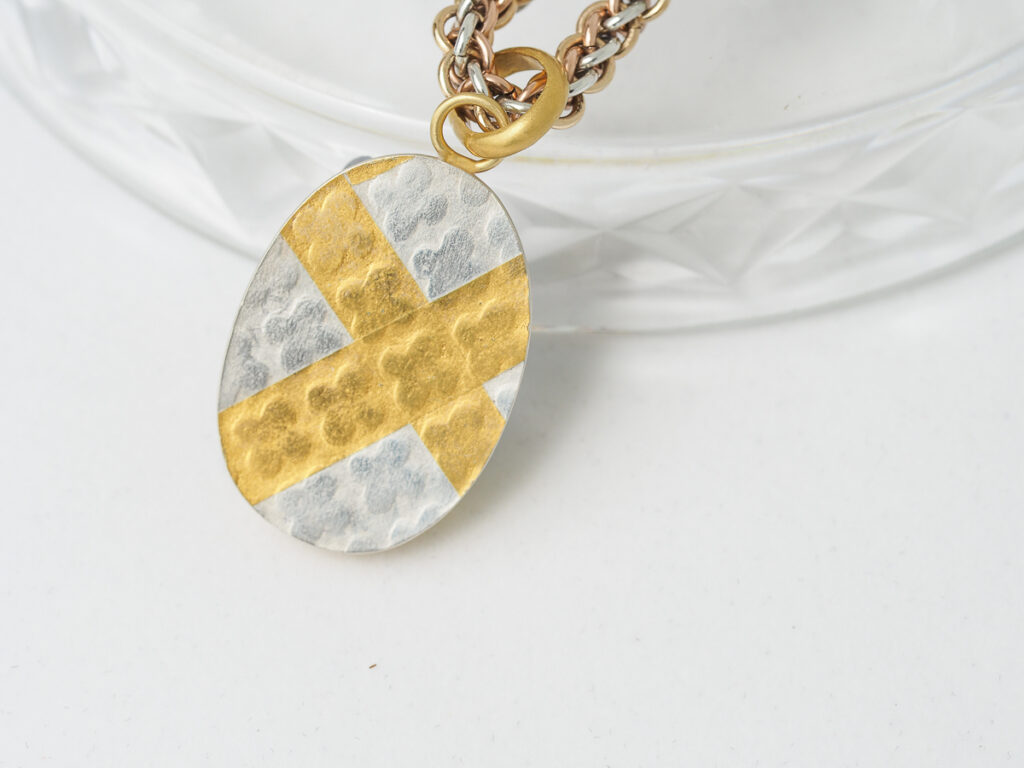
Never Choose Plated
Buy solid metals, not plated or fill. And no “gold tone” or “silver tone.” This tip is fundamental: gift-worthy jewelry should be made of solid metals. Seriously, no exceptions here. Why? Pieces constructed with solid metals are durable, do not discolor and can be repaired and resized if needed (depending on design). By contrast, a great deal of jewelry available in the mass market today, is plated or fill. Even recognizable brand names offer plated or fill jewelry. Why? It is cheaper to produce. It reduces the amount of precious metal used and makes for a lower initial price. But it has major environmental costs. Why? Read on.
When Cheap Goods Are Actually More Costly–A Closer Look at Plated
Environmentally Harmful Industrial Manufacturing Process. A plated piece is made of a base metal like brass and then a thin coating of silver or gold is plated on top. The plating process is harmful in itself, employing cyanide and other toxic chemicals that are difficult to dispose of safely.
Short Life Span. Plated jewelry has a short life expectancy, which is the opposite of the message you hope to send with your gift. If worn regularly, it may last only months. When the plating wears off and the base metal is exposed, it looks unattractive, may turn the skin green and may cause infections. Repairs cannot be made because they erode the thin plating. Re-plating is inconvenient and more expensive than the piece is worth.
No Resale Value / Not Recyclable. Even brand new, the piece has little or no resale value because the cost of reclaiming the small amount of gold or silver is more expensive than the value of the small amount of recovered precious metal. Most recycling metal refiners will reject plated material.
Destination: Landfill. The piece is disposed of at this point and becomes waste in a landfill. Disposable jewelry is not what you want to buy for your partner for any occasion.
As you can now see, this is an area where your thoughtful selection can make a meaningful difference, for the sake of your gift and the sake of the planet. Select only solid metals.

Environmental Impact: An Important ‘Art’ Consideration
Our next consideration is the origin or provenance, that is, sourcing of the material and its impact on people and place. Just like art buyers, jewelry buyers should inform themselves about the issues concerning provenance, so that they can buy with integrity. In the jewelry world, provenance begins with understanding more about where our metals come from.
Two Top Precious Metals Concerns
Problem No. 1: Harmful Gold Mining
Newly mined gold comes with concerns about mine conditions, environmental impact and treatment of workers. Gold mining commonly uses harmful chemicals including arsenic, lead, mercury and cyanide. It produces tons of toxic waste that is regularly dumped or leaked into waterways. Dani Cutler, Marketing Manager of metals supplier Hoover & Strong, points out that increasing demand for gold has led to an increase in informal gold mining, with a devastating increase in mercury pollution. This pollution contaminates drinking water supplies and sickens humans and animals for generations.

What Consumers Can Do: Let jewelers (and their suppliers) know you care about the issue by asking questions about the sourcing of their products, using your art buyer approach and asking questions about the source and supply chain of the metal. Often the jewelry seller’s website will include information about this or the jeweler will address it through your email inquiry.
For example: Is the piece made of newly mined metal or recycled / reclaimed metal? If newly mined, what is the source of the gold? What do they know about the conditions at the mine? Is your piece made of Fairmined Gold? Who is your supplier of the gold for this piece?
What is “Fairmined Gold?” Fairmined is an assurance label that certifies newly mined gold from artisanal and small-scale mining organizations who undertake responsible practices of traceability, mining methods, fairer trade conditions and support to communities. A Fairmined premium is paid to miners to incentivize them to achieve certification. The premium adds about 6.25% in cost for the Fairmined gold. The Nobel Prize medallion itself is made of Fairmined gold. If it is within your budget, and is appealing to the person in charge of deciding Wearability, consider pieces made with Fairmined gold. Jewelry makers can purchase Fairmined gold from several U.S. suppliers. You can learn more about Fairmined Gold at https://fairmined.org
.Problem No. 2: Unregulated Recycling Industry
Jewelry makers and consumers might think that they can avoid the issues presented by newly mined gold simply by using recycled gold which is plentiful and identically beautiful and valuable as newly mined gold. But recycled precious metals come with some challenges of their own, having to do with nefarious inputs into the supply chain.
A recent industry improvement, just since 2019, is the Recycled Material Standard (RMS), in which participating companies undertake recordkeeping and submit to extensive auditing. Compliance with the RMS can be certified by an independent organization such as SCS Global which is expert in verifying environmental and sustainability claims.
As one respected metals refiner David H. Fell & Co. writes, “We’ve taken on [RMS Compliance] by partnering with SCS Global Services, experts in environmental and sustainability standards, to independently verify our recycled metals. Achieving SCS Recycled Standard V7-0 certification not only gives our customers the assurance that the metal we claim is recycled actually is recycled, but it also confirms that our recycled metals did not originate from an illegal mine, was not smuggled across borders, and did not otherwise enter our supply chain illegally.”
What Consumers Can Do: Is your metals supplier certified for recycling in the metal I am considering purchasing? Who is your metals supplier for this piece?
Bottom Line: Use recycled gold supplied by a supplier who is certified by an independent auditing agency such as SCS Global. If it is within your budget, consider using Fairmined Gold for your piece, which benefits and incentivizes small scale miners to use responsible mining practices.
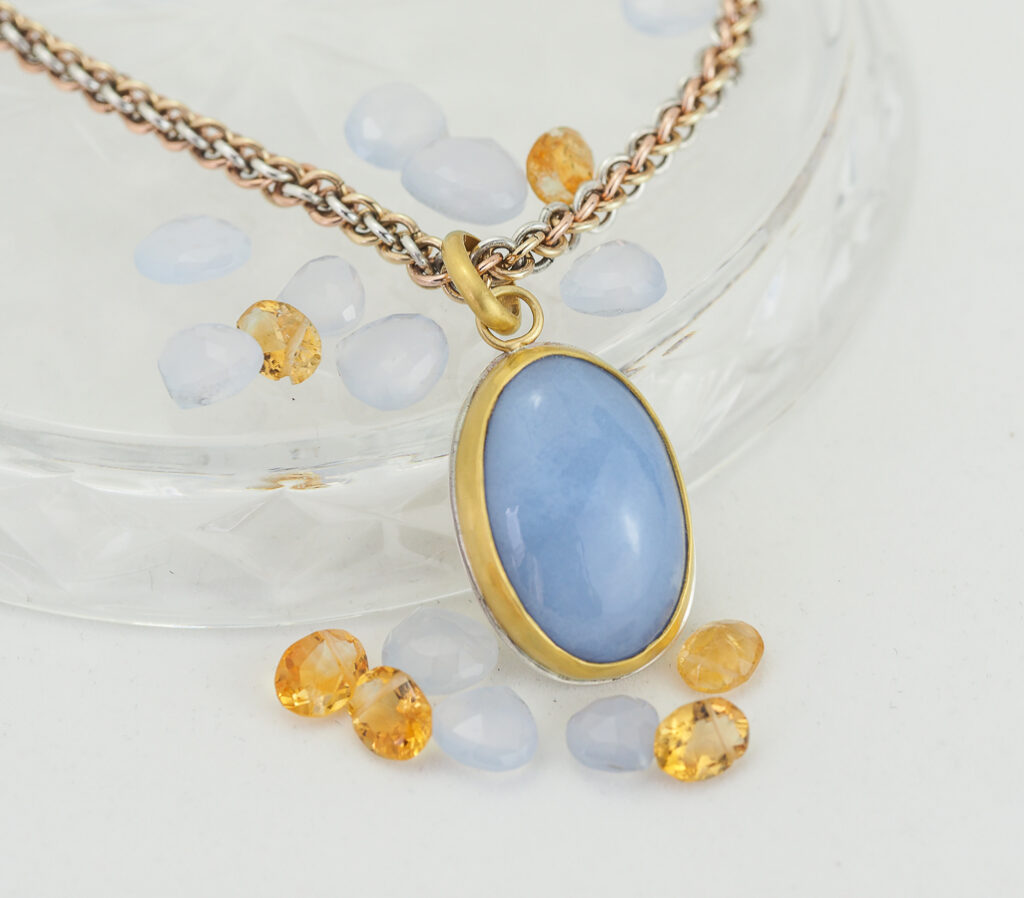
Putting It All Together
In the “Art” part of “Wearable Art”, you’ll be putting real thought into the gift buying process, thought that ensures quality and integrity. Your recipient will know that you believe they are worth it.
Type of Metal: Choose Solid Metal, 18k gold or silver. Not plated.
Provenance of Metal: Fairmined or Certified Recycled
Choose gold or silver that is recycled and supplied by a supplier with certification from an independent auditor. Or if using newly mined gold, look for metal certified by Fairmined.
Be Skeptical of “Greenwashing”
Do not be satisfied with unsubstantiated marketing claims of “eco friendly”, “sustainable”, or “conflict free.” These are marketing terms and are unregulated. Too many jewelry sellers have responded to the challenges in the industry with a PR campaign instead of changing their ways of doing business. Look behind the fluff for the certifications.
I recommend sharing this article with your partner so that they will be aware of what you are reaching for on their behalf in terms of good quality and environmental responsibility. That will help them better coordinate their thinking. For example, they’ll know they can skip the “plated jewelry” area entirely!
It may also be helpful for you to share this article or this summary section with your potential jewelry seller so they know what your criteria are.
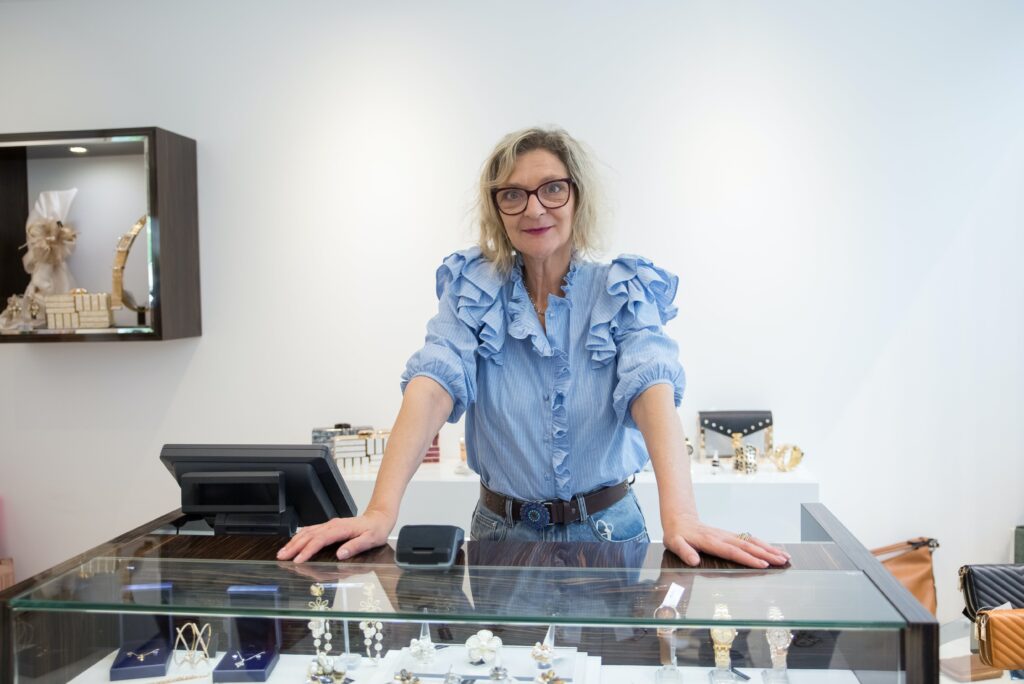
Where To Shop:
Now that you know how to shop for jewelry, you can shop anywhere you wish. Currently you are more likely to find things that meet your criteria in boutiques, galleries, art and craft fairs, and shops offering artisan jewelry, brick and mortar and online. Currently consumers seeking sustainable jewelry will find little joy from mass market retailers who have a harder time changing course.
With your quality considerations in hand, you can shop with confidence and know right away whether the shop offers the quality pieces that you are looking for. Eventually you may develop favorite shops that cater to your criteria but you will always be able to venture into the marketplace with confidence.
Enjoy selecting a thoughtful and environmentally sound gift.
Using these principles as your guide, you will be able to select a gift of jewelry that will delight your partner for years to come and will be in alignment with your sustainability values. Now that is a truly thoughtful gift.
End note: If you found this article helpful to you in your search for a meaningful gift for your partner, I would love to hear your story and see the pictures! Contact me at donna@donnaweaverdesign.com.

